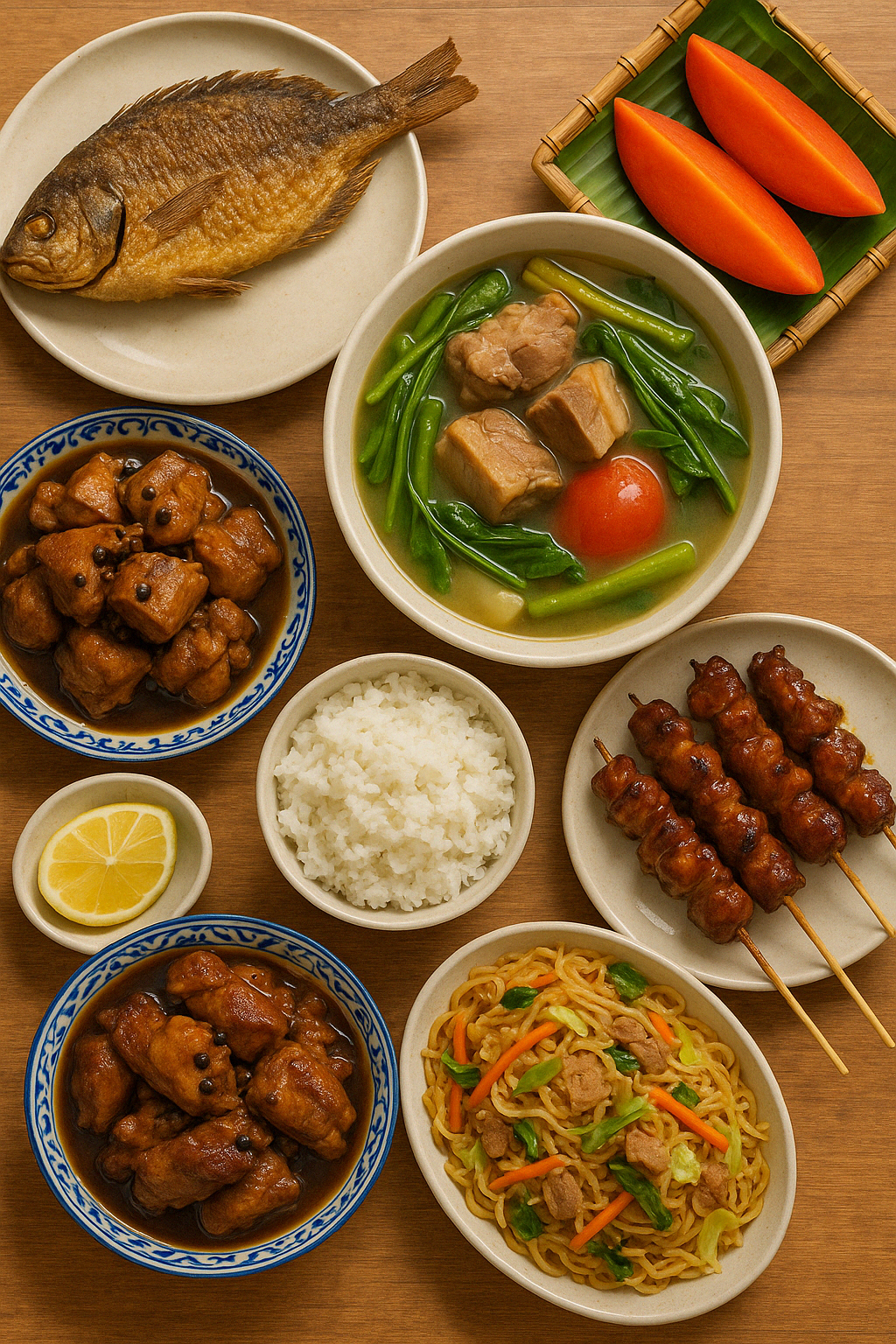When traveling to the Philippines, one of the most delicious ways to experience the country’s rich heritage is through its food. Filipino cuisine is a colorful reflection of the nation’s history, blending indigenous traditions with Spanish, Chinese, American, and Malay influences. But beyond flavors and ingredients, food in the Philippines is about connection—sharing meals, stories, and traditions that bring people together.
At the heart of Filipino food culture is the idea of communal eating. Meals are rarely eaten alone; instead, they are shared among family, friends, and even unexpected guests. Whether it’s a simple home-cooked sinigang or a grand lechon feast, food is a way to celebrate life and express care. Don’t be surprised if a local warmly invites you to eat with them—even if you’ve only just met.
Start your culinary journey with staples like adobo, a savory stew of meat, soy sauce, vinegar, and garlic that varies in taste from one household to another. Try kare-kare, a peanut-based oxtail stew, or sisig, a sizzling pork dish known for its bold flavors. Street food lovers can dive into local favorites such as isaw (grilled chicken intestines), kwek-kwek (quail eggs in orange batter), and the iconic balut—a fertilized duck egg that challenges the adventurous eater.
No Filipino meal is complete without rice, which is eaten with almost every dish. Even desserts, like suman (rice cakes) and bibingka (rice flour cake), highlight the versatility of this staple. Speaking of desserts, don’t miss halo-halo, a refreshing mix of crushed ice, sweet beans, fruits, jellies, and leche flan—a perfect treat for the country’s tropical climate.
Filipino food is also deeply tied to festivals and family gatherings. During holidays like Christmas or town fiestas, tables overflow with dishes lovingly prepared for days. These events showcase not just the abundance of Filipino cuisine, but the joy of cooking and eating together.
To truly immerse yourself, try a boodle fight—a military-inspired eating tradition where food is served on banana leaves and eaten with bare hands. It’s messy, fun, and a fantastic way to bond with locals.
Food in the Philippines is more than sustenance—it’s a cultural experience, an expression of love, and a bridge to understanding the Filipino soul. So go ahead, take a bite, and discover the stories behind every dish.



